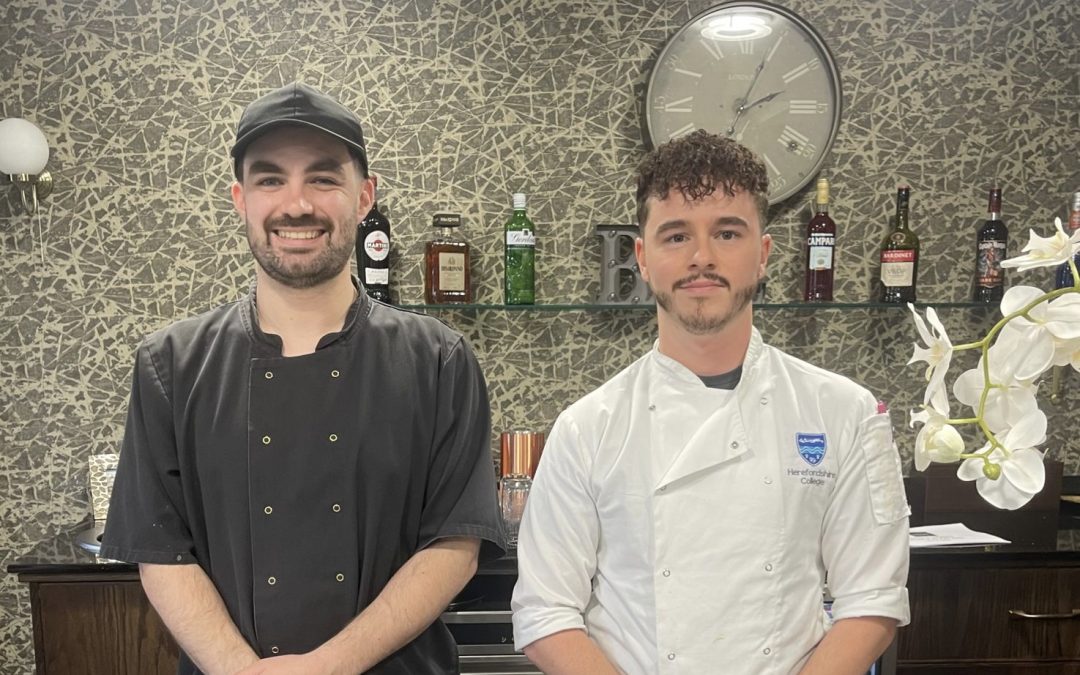A HEREFORD care home is going to extra lengths to ensure residents who suffer from a condition which makes mealtimes more difficult are still able to enjoy food which looks appetising, and safe.
Science has proven that first impressions count when it comes to food, but this can be challenging when the diner suffers from dysphagia, a swallowing disorder estimated to affect one in twelve people in the UK. This often means people need to eat pureed food.
But at Brockington House Care Community in Hafod Road, Hereford, the challenge of preparing food that looks appetising and is safe for people to eat is one which is taken seriously, and this has resulted in Head Chef Cihan Wiltshire and Chef Ashley Davies undergo training in IDDSI – the International Dysphagia Diet Standardisation Initiative.
And the pair are now passing on what they have learned to other staff at the home to ensure the mealtimes of the ladies and gentlemen who live in Brockington House, and who have dysphagia, are enjoyable and safe.
IDDSI grades the texture and thickness of foods and liquids into a standard global classification of 8 levels. By grading food in this way, a person with dysphagia – or their carer – can be aware of whether something is safe to eat or drink.
Cihan says: “Some people might initially think the solution is simply to purée all food to a pulp, making it look like baby food and often a horrible looking mush that does not look appetising at all.
“But want all our residents to enjoy their food, and to have the same choices as everyone else and this training, which chefs and carers are undergoing, will help us to do that safely.”
At Brockington, every resident has a “food passport” which details their food likes and dislikes, any allergies, dietary requirements and IDDSI classification.
Using this, chefs can prepare a meal and adapt it so everyone can enjoy.
The example Cihan uses to demonstrate to other staff is a chicken roast dinner, prepared at four different levels of the IDDSI scale. It starts with a standard roast dinner, then the same meal which falls away to bite size pieces.
As part of a presentation to cascade learning to staff, Ashley demonstrated using spaghetti and meatballs as an example. The pasta was puréed and then piped into a spaghetti shape to look practically identical to a non- puréed meal.
“Lower down the scale the food may have to be puréed but this can be done to each item individually and crafted so the carrot puree on the plate looks like a carrot, perhaps with some green purée as a tuft of leaf,” Cihan explains.
It can take an additional two hours to prepare food in this way, but Cihan is in no doubt it is worth it.
“To be faced with a plate of what looks like mush can be de-humanising and we have residents who simply will not eat it,” he said. “
But when care is taken in the presentation you can see their eyes light up, it looks delicious and then tastes delicious.
“It has actually enhanced the dining experience for all. There are some Michelin starred restaurants where you pay a lot of money for velouté sauces and purées, and we include them as a standard option.”
People with dysphagia can experience difficulty swallowing food or drinks – including medication – and this in turn can lead to serious conditions including chest infections, malnutrition, or dehydration.
Someone with a secondary condition, such as dementia, may not appreciate they have difficulty swallowing and then choking can become a danger. The severity of the condition and the thickness of the food someone can consume, can vary from person to person.




